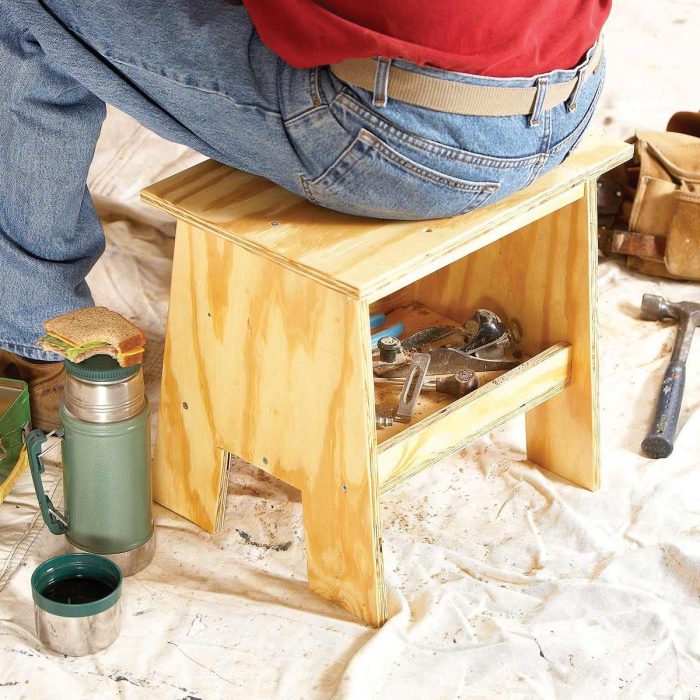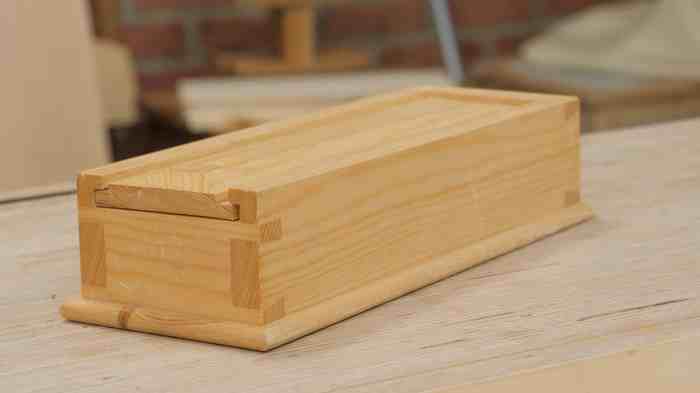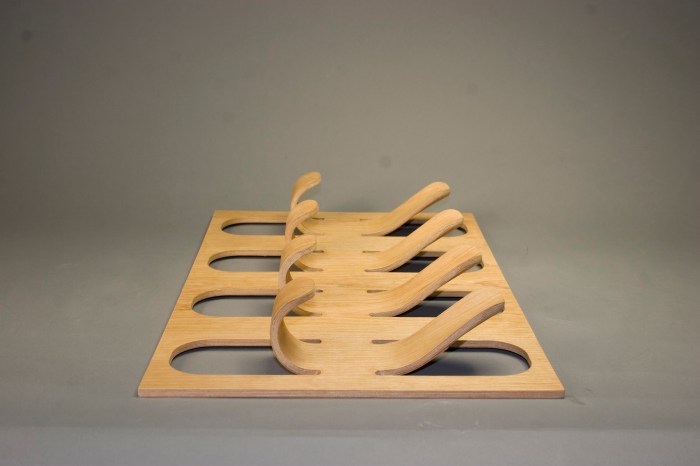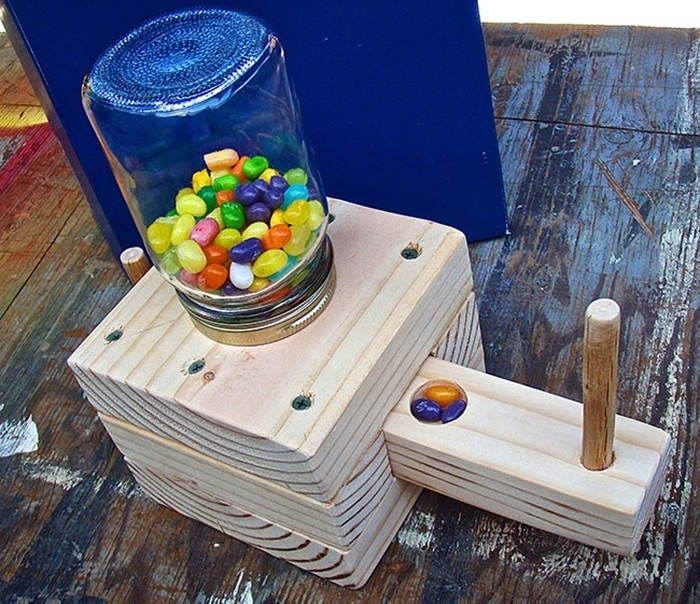Free woodwork projects offer a fantastic way to unleash your creativity, learn valuable skills, and bring your woodworking dreams to life. Whether you’re a seasoned woodworker or a curious beginner, the abundance of free plans and resources online makes woodworking accessible to everyone. These projects provide a rewarding path to building practical furniture, decorative items, and even unique toys, all while saving money and expanding your woodworking knowledge.
From simple beginner-friendly projects to more complex challenges, free woodworking resources cater to all skill levels. With detailed instructions, step-by-step guides, and readily available materials, these projects allow you to experiment with different techniques, refine your skills, and create something truly special. The world of free woodworking projects is a treasure trove of inspiration, offering endless possibilities to transform your vision into reality.
Finding Free Woodwork Projects

Finding free woodworking projects can be a great way to save money and gain experience. There are many resources available online and offline, offering a wide range of projects for all skill levels.
Free Woodworking Project Resources
There are many great online platforms where you can find free woodworking plans. Here are some of the most popular:
- Ana White: Ana White is a popular woodworking blogger and author who offers a vast library of free plans, covering everything from simple shelves to intricate furniture pieces. She provides detailed instructions and diagrams, making her plans easy to follow. Her plans are often geared towards beginners, but she also has more challenging projects for experienced woodworkers.
- Woodworking for Mere Mortals: This website features a wide selection of free woodworking plans, organized by project type, skill level, and material. The plans are well-written and easy to understand, with detailed instructions and diagrams. The website also offers a variety of woodworking tips and techniques.
- The Wood Whisperer: Hosted by Marc Spagnuolo, this website offers a mix of free and paid woodworking plans. The free plans are well-designed and feature detailed instructions and diagrams. Marc also provides videos and tutorials that can help you understand the construction process.
- Instructables: This website is a great resource for finding free woodworking plans, as well as other DIY projects. You can search for plans by or browse by category. Instructables also features user-submitted plans, which can provide a wide range of inspiration.
- Pinterest: Pinterest is a great platform for finding woodworking project inspiration. You can search for specific projects or browse by category. Pinterest also allows you to save your favorite plans to a board for easy access.
Evaluating Free Woodworking Project Sources
It is important to evaluate the quality of free woodworking plans before you start a project. Here are some things to consider:
| Resource | Type of Project | Skill Level | Example |
|---|---|---|---|
| Ana White | Furniture, DIY Projects | Beginner to Intermediate | Simple coffee table, DIY bed frame |
| Woodworking for Mere Mortals | Furniture, Storage Solutions, Outdoor Projects | Beginner to Advanced | Wooden storage bench, outdoor picnic table |
| The Wood Whisperer | Furniture, Tools, Techniques | Beginner to Advanced | Detailed plans for a classic rocking chair, woodworking tool reviews |
| Instructables | Various DIY projects, including woodworking | Beginner to Advanced | Plans for a simple birdhouse, complex woodworking projects with detailed instructions |
| Wide range of projects, including woodworking | Beginner to Advanced | Plans for a rustic coffee table, intricate woodworking projects for experienced woodworkers |
- Clarity and Detail: Look for plans that are well-written and easy to understand. They should include clear instructions, diagrams, and measurements.
- Accuracy: Make sure the plans are accurate and include all the necessary information. Double-check measurements and materials lists to avoid mistakes.
- Reliability: Consider the source of the plans. Websites and authors with a good reputation for accuracy and reliability are more likely to provide high-quality plans.
- User Feedback: Check for user feedback or reviews to get an idea of the quality of the plans.
Essential Tools and Materials

Woodworking projects, from simple to complex, require a set of essential tools and materials to ensure success. Understanding the tools and materials needed for your project is crucial, as it allows you to work efficiently and safely, and produce quality results.
Choosing the Right Tools
Choosing the right tools is essential for woodworking projects, as it directly impacts the quality and efficiency of your work. The specific tools needed will vary depending on the project’s complexity and your experience level.
- Hand Tools: These are essential for basic woodworking tasks, and are often used in conjunction with power tools. Some common hand tools include:
- Hammer: Used for driving nails, chiseling, and other tasks. Choose a hammer with a comfortable grip and a head size appropriate for your needs.
- Screwdriver: Used for driving screws and removing them. Choose a screwdriver with a comfortable grip and a tip size that matches the screw size.
- Chisel: Used for carving, shaping, and removing wood. Choose chisels with a sharp blade and a comfortable handle.
- Saw: Used for cutting wood. There are various types of saws, such as handsaws, crosscut saws, and coping saws, each suited for different cutting tasks.
- Measuring Tape: Used for measuring and marking wood. Choose a measuring tape with a clear and accurate scale.
- Pencil: Used for marking wood. Choose a pencil with a sharp point and a comfortable grip.
- Power Tools: Power tools can significantly speed up and simplify woodworking tasks. However, it’s important to use them safely and with proper technique. Some common power tools include:
- Circular Saw: Used for cutting wood to length and shape. Choose a circular saw with a blade size appropriate for your needs and a safety guard.
- Jigsaw: Used for cutting intricate shapes and curves in wood. Choose a jigsaw with a blade size and type appropriate for your needs.
- Drill: Used for drilling holes in wood. Choose a drill with a range of drill bits and a speed control.
- Router: Used for shaping and trimming wood. Choose a router with a range of bits and a safety guard.
- Sanders: Used for smoothing and finishing wood. Choose a sander with a range of grits and a dust collection system.
Choosing the Right Materials
Choosing the right materials is just as important as choosing the right tools. Wood is the primary material used in woodworking, but there are many different types of wood available, each with its own properties and characteristics.
- Wood: The type of wood you choose will depend on the project requirements and your budget. Some common types of wood used in woodworking include:
- Softwoods: These are typically lighter and easier to work with, making them suitable for beginner projects. Examples include pine, spruce, and fir.
- Hardwoods: These are denser and more durable, making them suitable for furniture and other demanding projects. Examples include oak, maple, and cherry.
- Fasteners: These are used to join pieces of wood together. Some common fasteners include:
- Nails: These are driven into wood with a hammer. Choose nails with the appropriate size and type for your project.
- Screws: These are driven into wood with a screwdriver. Choose screws with the appropriate size, type, and length for your project.
- Finishes: These are used to protect and enhance the appearance of wood. Some common finishes include:
- Paint: This is used to cover the surface of wood with a solid color. Choose paint with the appropriate type and finish for your project.
- Stain: This is used to change the color of wood without covering its grain. Choose stain with the appropriate color and finish for your project.
- Varnish: This is used to protect wood from moisture and UV rays. Choose varnish with the appropriate gloss level for your project.
Safety Precautions
Safety is paramount when working with woodworking tools. Always wear appropriate safety gear, such as eye protection, ear protection, and a dust mask. Always use tools properly and with caution, and never operate tools while tired or under the influence of drugs or alcohol.
- Eye Protection: Always wear safety glasses or goggles when working with woodworking tools. This will protect your eyes from flying debris and sawdust.
- Ear Protection: Power tools can be very loud, so it’s important to wear earplugs or earmuffs to protect your hearing.
- Dust Mask: Woodworking can create a lot of dust, which can be harmful to your lungs. Always wear a dust mask when working with woodworking tools.
- Work Area: Keep your work area clean and free of clutter. This will help you avoid tripping and falling, and will also make it easier to find the tools you need.
- Tool Maintenance: Keep your tools sharp and in good working order. This will help you avoid accidents and will also produce better results.
Woodworking Techniques

Woodworking techniques are the fundamental skills that form the foundation of any woodworking project. Mastering these techniques allows you to create precise cuts, smooth surfaces, and beautiful finishes.
Measuring
Measuring accurately is crucial in woodworking. It ensures your project’s dimensions are correct and that all parts fit together perfectly.
- Tape Measure: A standard tape measure is essential for measuring lengths and distances.
- Measuring Stick: A measuring stick, often made of wood or metal, provides a straight edge for precise measurements.
- Ruler: A ruler is used for smaller measurements and for marking lines.
- Combination Square: A combination square has a ruler, a protractor, and a 90-degree angle, making it versatile for various measurements.
- Digital Caliper: A digital caliper is a highly accurate tool for measuring inside and outside dimensions.
Cutting
Cutting wood accurately and safely is essential for any woodworking project.
- Hand Saw: A hand saw is a basic tool for cutting wood. It’s used for straight cuts and can be used for rough cuts.
- Circular Saw: A circular saw is a power tool that uses a rotating blade to cut wood. It’s ideal for making straight cuts and is faster than a hand saw.
- Jigsaw: A jigsaw is a power tool used for making curved cuts. It’s a versatile tool for cutting intricate shapes and designs.
- Table Saw: A table saw is a powerful tool for making accurate and precise cuts. It’s a great tool for cutting large pieces of wood and for making repeated cuts.
- Miter Saw: A miter saw is used for making angled cuts. It’s ideal for cutting frames, molding, and other projects that require precise angles.
Sanding
Sanding smooths wood surfaces, removing imperfections and preparing them for finishing.
- Sandpaper: Sandpaper is a common abrasive material used for sanding wood. It comes in various grits, with finer grits removing finer scratches.
- Sanding Block: A sanding block helps to apply even pressure when sanding.
- Random Orbital Sander: A random orbital sander is a power tool that provides a smoother finish than a regular sander.
- Belt Sander: A belt sander is a powerful tool for sanding large surfaces.
Finishing
Finishing protects and enhances the wood’s appearance.
- Stain: Stain colors the wood without hiding the grain.
- Paint: Paint covers the wood surface with a solid color.
- Polyurethane: Polyurethane is a clear finish that protects the wood from water and scratches.
- Varnish: Varnish is a clear finish that adds a glossy or satin finish to the wood.
- Wax: Wax provides a protective layer and a natural shine.
Inspiring Woodwork Projects

Free woodworking projects can be a great way to unleash your creativity and learn new skills. From simple and functional pieces to elaborate and artistic creations, the possibilities are endless.
The beauty of woodworking lies in its ability to transform ordinary materials into extraordinary objects. By exploring the world of free woodworking projects, you can discover a wide range of designs and techniques, allowing you to personalize and customize your creations to reflect your unique style and preferences.
Examples of Innovative and Unique Woodworking Projects
The internet is a treasure trove of free woodworking projects, showcasing the incredible diversity of woodworking designs. Here are a few examples:
- Wooden Wall Clock: A unique wall clock crafted from salvaged wood, featuring intricate designs and a vintage aesthetic. The clock face can be customized with various wood species and finishes to create a one-of-a-kind statement piece.
- Floating Shelves: Sleek and minimalist floating shelves constructed from reclaimed wood, adding a touch of rustic charm to any room. These shelves can be designed in various shapes and sizes to accommodate different storage needs.
- Wooden Phone Stand: A practical and stylish phone stand crafted from a single piece of wood, featuring a unique design that elevates your phone while charging. The stand can be customized with different wood types and finishes to complement your desk setup.
Customizing Free Woodworking Projects, Free woodwork projects
Free woodworking projects often provide a starting point for your own creative endeavors. You can easily customize these projects to suit your personal preferences by:
- Choosing Different Wood Species: Experiment with various wood types to create unique textures and colors. For example, you can use walnut for a rich brown tone, maple for a light and bright finish, or pine for a rustic and natural look.
- Altering Dimensions and Shapes: Adjust the size and shape of the project to fit your specific needs. For instance, you can make a larger coffee table or a smaller end table depending on your space requirements.
- Adding Decorative Elements: Incorporate decorative elements such as inlays, carvings, or paint to enhance the visual appeal of your project. You can create intricate patterns, add personalized details, or simply give the piece a unique character.
Diversity of Free Woodworking Projects
Free woodworking projects encompass a wide range of styles, functionalities, and skill levels.
“From simple birdhouses to elaborate furniture pieces, there’s a free woodworking project for everyone.”
| Project Type | Example | Skill Level |
|---|---|---|
| Outdoor Furniture | Wooden bench, picnic table, swing set | Beginner to Intermediate |
| Home Decor | Wall shelves, picture frames, decorative boxes | Beginner to Intermediate |
| Functional Items | Cutting boards, kitchen organizers, tool holders | Beginner to Intermediate |
| Toys and Games | Wooden puzzles, toy cars, dollhouses | Beginner to Intermediate |
| Art and Crafts | Wooden sculptures, decorative plaques, personalized signs | Intermediate to Advanced |
Epilogue

Embarking on free woodworking projects is a journey of discovery, creativity, and accomplishment. With the wealth of resources available, you can unlock your inner craftsman and build remarkable pieces that reflect your personal style and woodworking expertise. So, grab your tools, gather your materials, and dive into the exciting world of free woodworking projects. Let your imagination guide you, and enjoy the satisfaction of creating something beautiful and functional with your own hands.
Popular Questions
Where can I find free woodworking plans?
Numerous websites and online platforms offer free woodworking plans. Some popular options include Ana White, Woodworking for Mere Mortals, and Free Woodworking Plans.
What are some basic woodworking tools I need to start?
Essential tools for beginners include a measuring tape, saw, hammer, screwdriver, drill, and sandpaper. You can gradually expand your tool collection as you progress with more complex projects.
How can I ensure safety when working with woodworking tools?
Always wear safety glasses, ear protection, and a dust mask. Use proper tools and techniques, and never operate machinery without proper training. Familiarize yourself with the safety instructions provided with each tool.
Free woodworking projects are a great way to learn new skills and create something beautiful for your home. But before you get started, it’s important to have a solid foundation in woodworking basics. That’s where woodworking tips come in handy! They can help you avoid common mistakes and ensure your projects turn out the way you envision.
Once you’ve mastered the basics, you’ll be ready to tackle any free woodworking project you can find.
